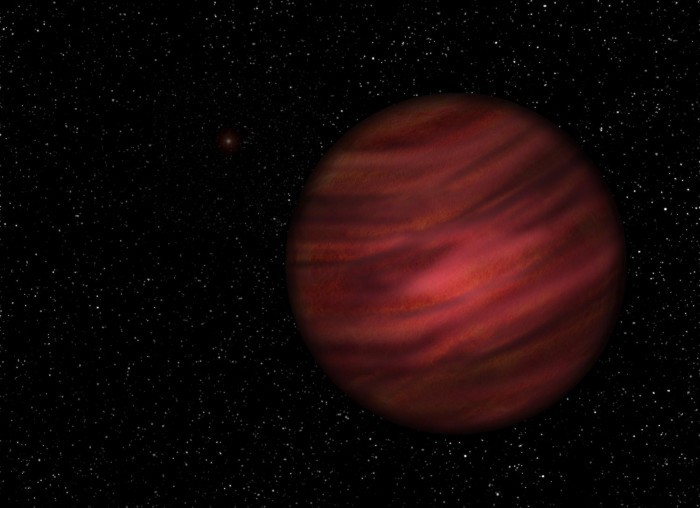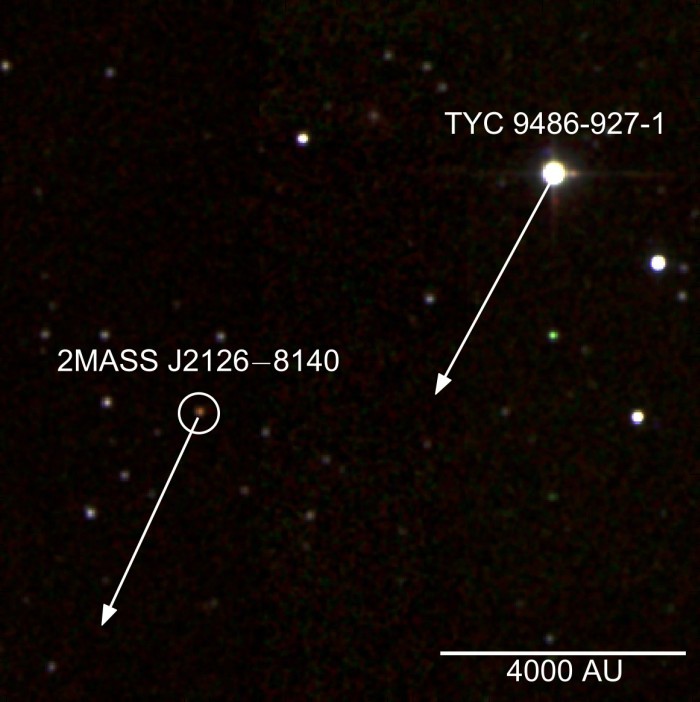Found a planet at a trillion kilometers away from its star

Astrophysics discovered the largest planetary system in the known Universe: in it the distance between the star and the planet is 1 trillion kilometers, that is, 6,685 astronomical units. This is 169 times greater than the distance between Pluto and the Sun.
One year on such a planet lasts 900,000 Earth years, so less than 50 years have passed since its inception.
The planet called 2MASS J2126–8140 and its star TYC 9486–927–1 were discovered as early as the last decade, but given the enormous distance from the star no one could assume that the planet was moving in orbit. Everyone thought that this is the so-called orphan planet, which is not gravitationally tied to any star. It turned out that it is not.
')
An analysis of the movement of the pair from the planet and the star showed that they are indeed related to each other.

The motion of the planet 2MASS J2126–8140 and the stars TYC 9486–927–1
“This is the widest planetary system found to date, and although its members have been known for eight years, no one has established a connection between objects before,” says Niall Deacon from the University of Hertfordshire (UK). “The planet was not as lonely as we first thought, but it’s definitely a relationship at a very long distance.”
2MASS J2126–8140 is a gas giant about 11.6-15 times more massive than Jupiter. It is very close: only 104 light years from us.
Analysis of traces of lithium burning on the spectrum approximately determines the age of the star in the interval from 10 to 45 Ma. So the gas giant managed to make less than 50 turns around its star.

Spectral analysis of the star TYC 9486–927–1
If there were life forms on the planet, they would hardly have guessed that their planet has its own sun: it looks just like another star in the sky.
"We were very surprised to find an object of such a small mass so far from its star," said one of the astronomers and authors of the discovery, Simon Murphy of the Australian National University. “There is no chance that the planet was formed, just like our solar system, from a large disk of dust and gas.”
How such a system was formed and how it maintains its state - these questions remain unanswered.
The discovery is described in a scientific article in the Monthly Notices of the Royal Astronomical Society ( pdf ).
Source: https://habr.com/ru/post/371679/
All Articles